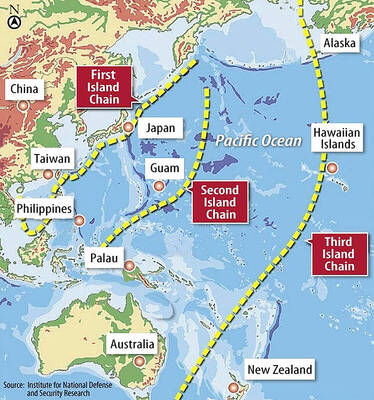The Ministry of National Defense’s estimated budget for fiscal 2022 tops those of other government agencies and is expected to grow by at least NT$10 billion (US$357.1 million), or 2.7 percent, Directorate-General of Budget, Accounting and Statistics (DGBAS) Minister Chu Tzer-ming (朱澤民) said yesterday.
The defense ministry is hoping to increase its budget for fiscal 2022 in light of increasing military harassment and threats from China, a source said on condition of anonymity.
Defense spending could surpass this year’s NT$361.7 billion, the source added.
The increase in defense spending for fiscal 2022 would not be lower than the average GDP growth over the past three years, Chu said.
The main cause for the increase would be rising personnel wages due to promotion of officers, he said.
The ministry’s fiscal 2022 budget would have been even higher if the already approved special budget allocated to it for the purchase of 66 F-16V jets were included, he added.
Chu declined to specify whether defense spending would grow by 2 percent or 3 percent next year.
Matters of national defense fall under the jurisdiction of the president, and President Tsai Ing-wen (蔡英文) will have the final say on the defense budget, he said.
Government spending for fiscal 2022, especially for social welfare — which stands at NT$558.8 billion this year — is expected to surpass that of fiscal 2021, he added.
The government is not planning to increase stock transaction taxes for fiscal 2022, as the TAIEX has continued to reach new heights this year, he said.
The DGBAS is expected to present separate reports to Premier Su Tseng-chang (蘇貞昌) and Tsai on the planned government budget.
Government agencies are to begin reviewing their budget plans this month and deliver them to the Executive Yuan by late next month for approval, the DGBAS said.
Once the government budget is approved by the Executive Yuan, it would be forwarded to the Legislative Yuan for approval, it said.

LIMITS: While China increases military pressure on Taiwan and expands its use of cognitive warfare, it is unwilling to target tech supply chains, the report said US and Taiwan military officials have warned that the Chinese People’s Liberation Army (PLA) could implement a blockade within “a matter of hours” and need only “minimal conversion time” prior to an attack on Taiwan, a report released on Tuesday by the US Senate’s China Economic and Security Review Commission said. “While there is no indication that China is planning an imminent attack, the United States and its allies and partners can no longer assume that a Taiwan contingency is a distant possibility for which they would have ample time to prepare,” it said. The commission made the comments in its annual

DETERMINATION: Beijing’s actions toward Tokyo have drawn international attention, but would likely bolster regional coordination and defense networks, the report said Japanese Prime Minister Sanae Takaichi’s administration is likely to prioritize security reforms and deterrence in the face of recent “hybrid” threats from China, the National Security Bureau (NSB) said. The bureau made the assessment in a written report to the Legislative Yuan ahead of an oral report and questions-and-answers session at the legislature’s Foreign Affairs and National Defense Committee tomorrow. The key points of Japan’s security reforms would be to reinforce security cooperation with the US, including enhancing defense deployment in the first island chain, pushing forward the integrated command and operations of the Japan Self-Defense Forces and US Forces Japan, as

‘TROUBLEMAKER’: Most countries believe that it is China — rather than Taiwan — that is undermining regional peace and stability with its coercive tactics, the president said China should restrain itself and refrain from being a troublemaker that sabotages peace and stability in the Indo-Pacific region, President William Lai (賴清德) said yesterday. Lai made the remarks after China Coast Guard vessels sailed into disputed waters off the Senkaku Islands — known as the Diaoyutai Islands (釣魚台) in Taiwan — following a remark Japanese Prime Minister Sanae Takaichi made regarding Taiwan. Takaichi during a parliamentary session on Nov. 7 said that a “Taiwan contingency” involving a Chinese naval blockade could qualify as a “survival-threatening situation” for Japan, and trigger Tokyo’s deployment of its military for defense. Asked about the escalating tensions

The Ministry of Economic Affairs said it plans to revise the export control list for strategic high-tech products by adding 18 items under three categories — advanced 3D printing equipment, advanced semiconductor equipment and quantum computers — which would require local manufacturers to obtain licenses for their export. The ministry’s announcement yesterday came as the International Trade Administration issued a 60-day preview period for planned revisions to the Export Control List for Dual Use Items and Technology (軍商兩用貨品及技術出口管制清單) and the Common Military List (一般軍用貨品清單), which fall under regulations governing export destinations for strategic high-tech commodities and specific strategic high-tech commodities. The